In the ever-evolving landscape of technology, artificial intelligence stands out as one of the most exciting and transformative innovations of our time. AI has transcended the realm of science fiction to become an integral part of our daily lives, enhancing everything from how we work to how we connect and explore the world. Here, we embark on an exploration of the “10 Best AI Tools” that are reshaping industries, revolutionizing workflows, and unleashing boundless creative possibilities.
Imagine having access to a toolkit that can analyze complex data, automate mundane tasks, and even simulate human intelligence. These AI tools are not just shaping the future; they are changing the way we approach problems and opportunities today. Whether you’re a seasoned tech enthusiast, a business professional seeking innovation, or someone who’s simply curious about the potential of AI, AI Tools offers a glimpse into the incredible world of artificial intelligence.
Join us on this journey as we dive into the functionality, versatility, and real-world impact of these cutting-edge AI tools. From machine learning platforms to natural language processing engines and creative AI solutions, our selection showcases the best of what AI technology has to offer. Discover how these tools are empowering individuals, businesses, and industries to harness the power of AI and unlock a future limited only by our imagination.
As we unveil these remarkable AI tools, prepare to be inspired, informed, and equipped to navigate the AI-driven landscape with confidence and enthusiasm. The future is here, and it’s waiting for you to explore with the “10 Best AI Tools” at your disposal.
Adobe Firefly in Photoshop

If there’s any cause for concern regarding the rise of generative AI art, it should be Adobe that’s paying close attention. This is the same company that has held a dominant position in computer-generated art for the past couple of decades.
Adobe has been experimenting with generative art through Firefly, a beta web service that enables users to transform text prompts into images (reminiscent of Midjourney, albeit less advanced). It allows users to add textures to text or recolor vector art images. However, Adobe has achieved a significant breakthrough in AI with the integration of Firefly into the Photoshop beta, and the results are nothing short of impressive.
Take, for instance, the sample image of the runner displayed above. I expanded the canvas, outlined an empty area, and instructed Photoshop to fill it with a “pond with waterlilies.” Within moments, it produced the larger image. The pond’s edge appears completely natural, the lighting is spot-on, and it even managed to reasonably capture the reflection of the runner and the dog in the water. While the reflection might not be entirely perfect, it’s a minor issue that can be easily corrected using Photoshop’s standard cloning tools.
Moreover, this capability extends to more subtle alterations. Consider the image of the footballer below, where I selected the player’s hair and asked Firefly to generate a “green mohawk-style haircut.” It removed the player’s existing hair and convincingly inserted a mohawk, with the most impressive aspect being its accurate representation of the sunlight’s direction in the photo. This resulted in lighter hair on the right side of the player’s head.

Tasks that previously required a significant amount of time and skill to execute convincingly can now be completed within seconds. This feature alone justifies the substantial monthly fee associated with Adobe’s services.
ChatGPT Plus
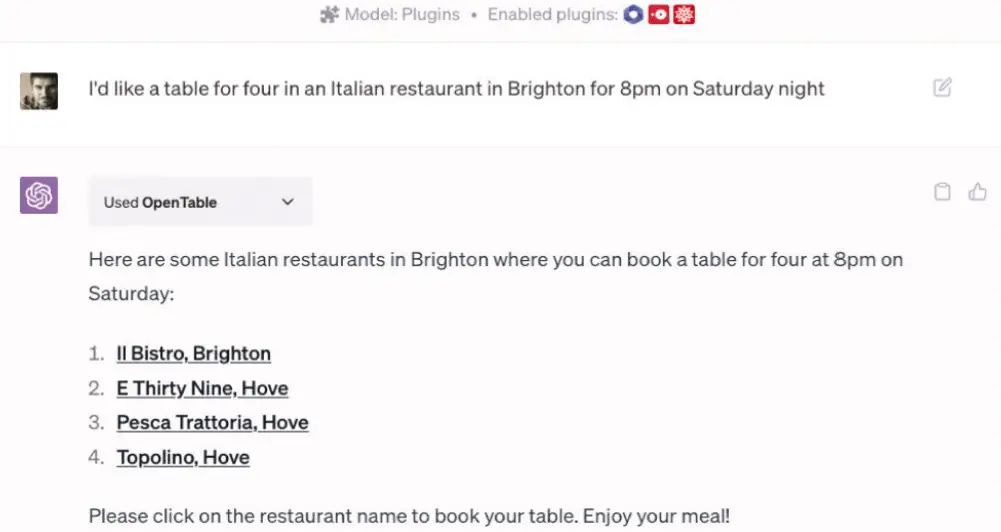
When you first start using ChatGPT Plus – and see that $20 per month evaporate from your bank account – you wonder how on earth OpenAI justifies such a fee. At the time of writing, even paying customers are rate-limited to 25 messages every three hours using the latest GPT-4 language model. And even though it can now access the web to extend its knowledge beyond the September 2021 cut-off date of the training data, so can the GPT-4-powered AI in Bing – and that’s entirely free.
Then you find the plugins and begin to see why we’ve not even started to scratch the surface of what AI can do. Enable the OpenTable plugin and tell ChatGPT you want to book a table for four at an Italian restaurant in Brighton on Saturday night; it will then go off and present you with a selection of relevant options. When you click through to the chosen restaurants, all the details are pre-filled – you just click to book.
Need something a bit more businesslike? The Code Interpreter plugin (limited availability) can take data trapped in Excel spreadsheets and convert it into (among many other things) 3D scatter plots, with your chosen color scheme and particular data strands highlighted.
You just tell the AI the output you want from the data, and it hands you the graph in HTML5 format, ready to upload to your website. It can even provide you with a written analysis of
the data. There’s a YouTube video that includes more examples.
The plugins are still in their infancy, but even from the hundred or so that are already in the store at the time of writing, you can see the enormous potential here.
Webpilot
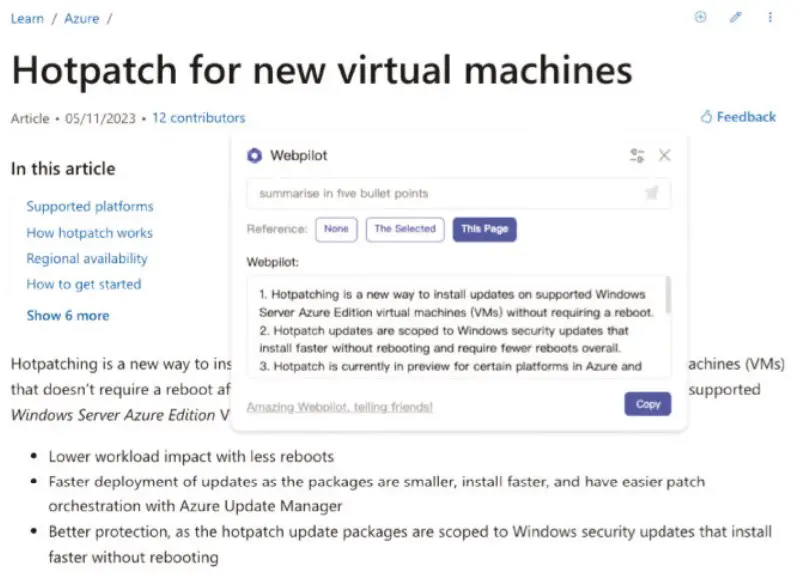
Let’s face it, working in the tech industry involves wading through a lot of lengthy, poorly written online documentation. Webpilot (webpilot.ai) is an AI assistant that can cut through the blather and extract the key information.
It’s a simple Chrome extension, although you’ll need an OpenAI API key to make the AI work. Once you’ve plugged in your API key, you can visit any web page, click the Webpilot icon at the top of the screen and ask it to, say, summarize the page in five bullet points. It’s fast, accurate and might save you an awful lot of time scrolling.
Webpilot is more than just a summarizer. It can help you rewrite passages of text, although AI-generated text is rather flat and has ticks of its own, such as starting sentences with “Therefore” and “However”. It can also generate opposing viewpoints, letting you highlight a passage of text and then generate a counter view. As if the internet doesn’t already have enough of those…
Midjourney

There are dozens of text-to-image services out there; so many, in fact, that it’s impossible to make a definitive declaration about which is best. However, the one service I consistently turn to for generative art is Midjourney, which continues to deliver high-quality results across a wide variety of styles and genres.
The key to Midjourney’s success is the rather byzantine way in which you access the service. There’s no direct web interface: instead, you enter your prompts via the Discord chat service and wait for your results to appear in the chat thread. It may sound like a weird way of doing things, but it has two distinct advantages. First, it works seamlessly on desktop and mobile apps, on pretty much any platform you can think of. Second, it encourages you to browse and learn from what other people are doing, with everyone’s results available to view in the various chat threads. Prompts also appear alongside images, allowing you to take inspiration for your own creations. You’ll be creating stunning images before you know it.
Midjourney also offers a degree of fine control that’s rare in generative art circles. The key elements here are the parameters that, for example, let you change the aspect ratio by adding “–ar 16:9” to your prompt, or the degree of “chaos” in the image. Midjourney is also a fantastic mimic/rip-off artist (depending on your point of view). Tell it to create an image “in the style of” Van Gogh or Matt Groening or Robert Capa or any one of hundreds of different artists, and that’s what you’ll get. The wonderful midlibrary.io can help you identify artists to ape.
It isn’t free – you’ll need to pay $10 a month to access the service, and even that imposes (generous) usage limits. But Midjourney’s consistently jaw-dropping results merit the outlay.
Altered Studio
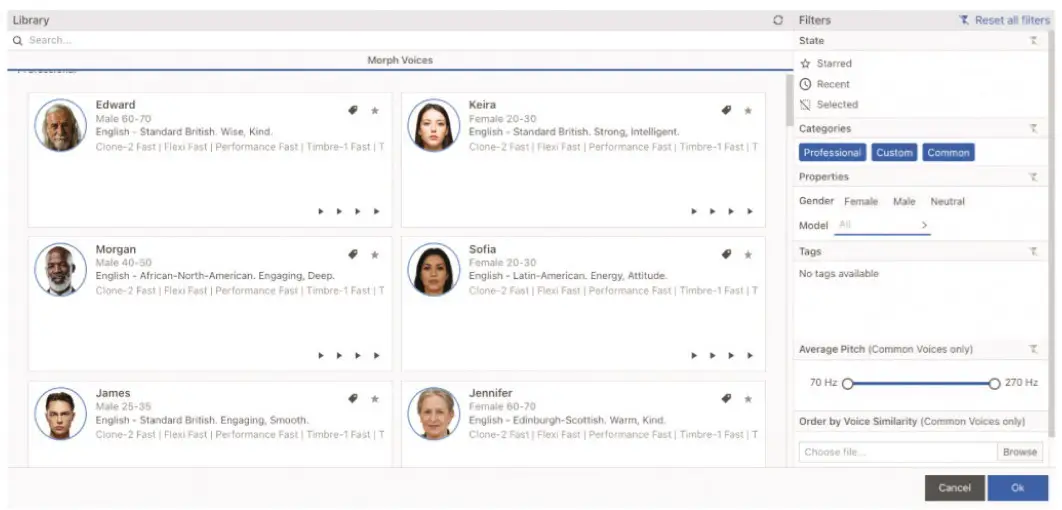
Ever wondered what your voice would sound like if you were a warm, kind, woman in her mid-sixties from Edinburgh called Jennifer? Okay, it’s probably not been giving you sleepless nights, but you genuinely need wonder no more with Altered Studio.
Altered Studio uses AI to transform your speech into a completely different voice. So, say for example you wanted a 20-something woman to voice over your new YouTube ad, but didn’t want the expense and hassle of booking a voice actor. You can record the audio yourself, upload it to Altered Studio, and pick from a huge bank of AI-generated voice characters.
The voices are unbelievably convincing; you’d struggle to tell them apart from real voice actors. You can visit the altered.studio website to listen to various samples or take up the free trial of Altered Studio and experiment with a limited selection of the voices available to subscribers yourself.
There’s a huge range of potential uses for Altered Studio. It could be used to voice different characters in video games, to provide a “different” host for a podcast, or to introduce speakers at a conference. In my tests, it worked best when you provided a voice recording; it also offers text-to-speech, but that emerged with a robotic speech pattern that clearly marked it out as AI.
Interviewsby.ai
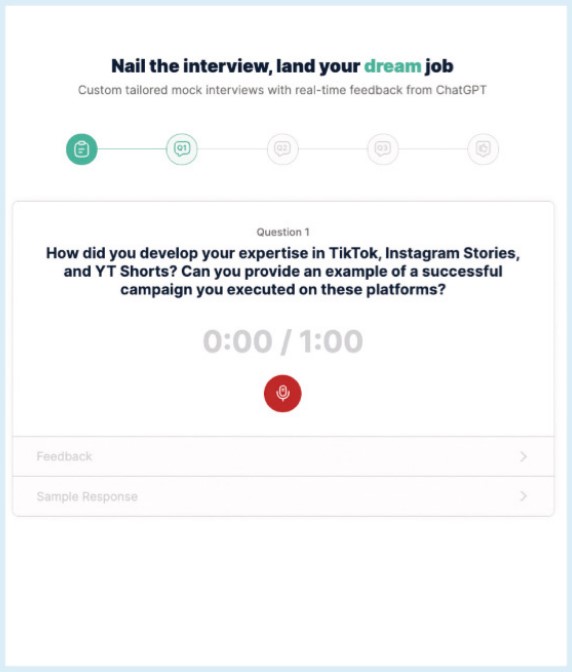
When there are 50 applicants for every job, any marginal gain is worth having. Interviewsby.ai is a cracking little tool for perfecting your interview technique.
It asks you to paste in the job description of the role you’re applying for and then spits out a selection of sample questions that you might face when being interviewed for that role. The questions are well targeted, although the more detailed the job description, the better the quality of question.
The key element of Interviewsby.ai is that it asks you to speak your responses as if you were in a live interview, which means you feel the same pressure of providing an instant response that you would in the real thing. Your answers can last up to a minute, and when you’re done, the AI transcribes what you’ve said and provides feedback on those answers.
In my mock interview for a head of editorial role, I kept neglecting to provide the specific examples from my previous experience that the question was asking for, which was a strong reminder to answer the question, not just spout what you think they want to hear. The feedback is generally encouraging and specific, although the suggested answers are less worthwhile, as the AI obviously doesn’t know your career history. Nevertheless, it’s a great free training tool for anyone preparing to face an interview panel.
GitHub Copilot
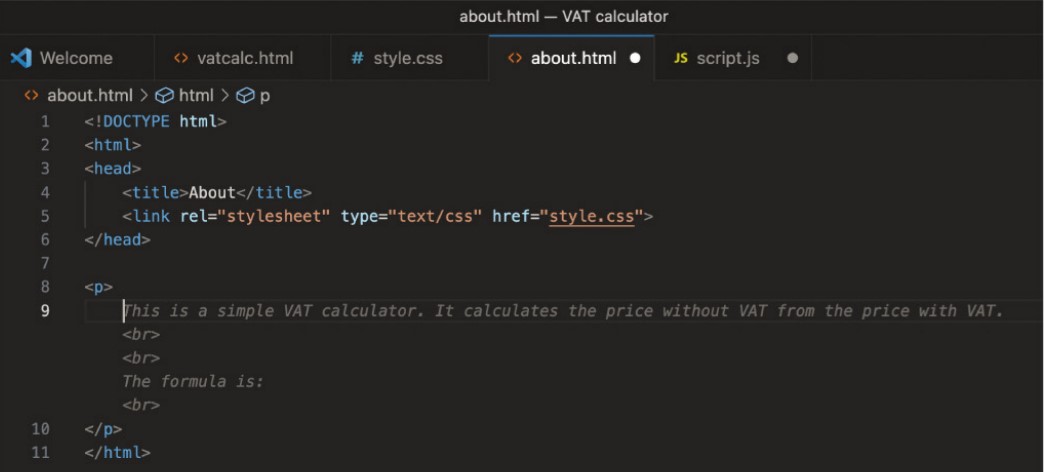
GitHub Copilot Confession time: I’m a long way from a professional coder. I know my way around HTML/ CSS files, have dabbled with JavaScript and Python, but I’m not on any CIA watchlist of script kiddies. And in some ways that makes me the perfect candidate to test drive GitHub Copilot.
For this is autocomplete for code. It’s a code-editor extension that sits quietly in the background, until you start entering or tweaking code on a page, after which you’ll likely see suggested edits appear in grey.
For coding idiots like me, it’s super-useful when used in conjunction with AI-written code. For example, I asked Bing AI to help me write a basic GST calculator – you enter a price, hit a button, and it shows you what the price is. I asked it to deliver separate HTML, CSS and JavaScript files and it did so perfectly.
So now I’ve got my lovely calculator I obviously want to create an about page for my website, so people know where to hire this coding genius. I create an about.html and start to enter at the top of the page, and Copilot basically takes over. It suggests a with About in the title tags and automatically creates a link to the correct stylesheet. It even starts suggesting copy for the page, as you can see in the screenshots above and below, writing: “This is a simple GST calculator. It calculates the price without GST from the price with GST.” It’s not going to win any prizes for elegance, but the AI has written an explanation of what the site does without any prompting.
This is a hideously basic example, but it’s capable of far more. For example, you can write in comments exactly what your code to do (such as draw a scatterplot, reverse a string, fetch a rating from TrustPilot) and Copilot will suggest the necessary code. Instantly. Right there in Visual Studio Code or other popular editors. Often with multiple suggestions, in case you don’t like the first solution it offers.
Copilot is no replacement for coding knowledge. You’ll still need to know how the plumbing works and it will get things wrong from time to time. But GitHub Copilot is almost guaranteed to make your coding jobs monumentally easier for only $10 per month.
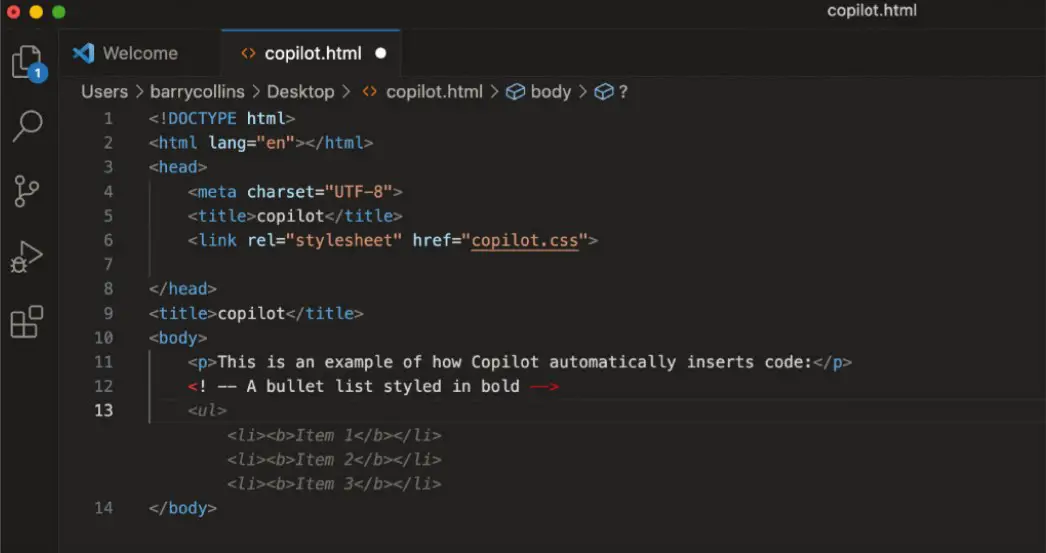
Fliki
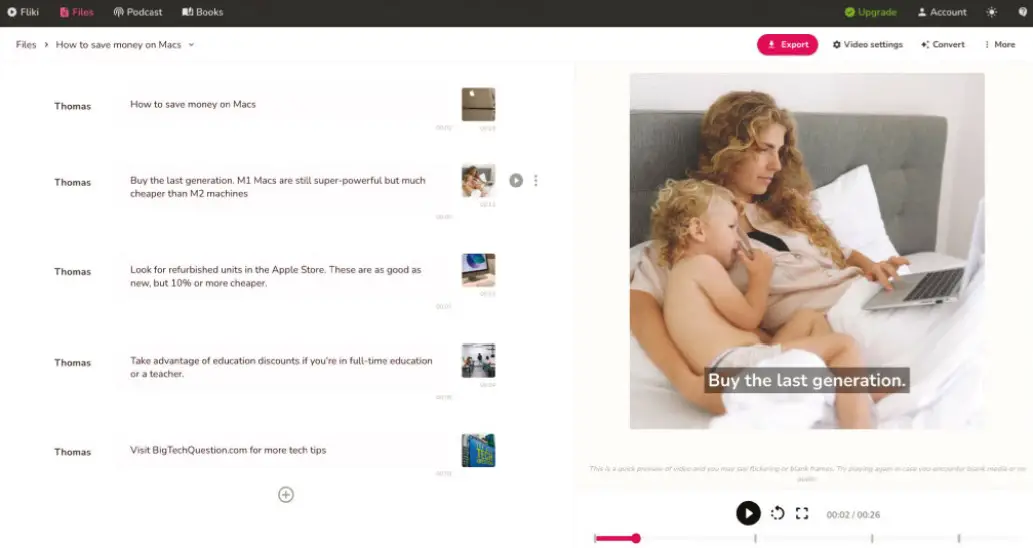
Video content is critical on social media, but not everyone can afford a video team to shoot content. Fliki could potentially save you a bundle on the camera crew.
It works like this: you write a video script, choose a virtual host to narrate it, select some stock video/images for each scene (or upload your own), add some background music if you want, and Robert is your dad’s brother. The AI voice narration sounds a little too synthetic, although you can manually alter the pitch of words or correct mispronunciations of brands or other words. But this will surely improve over time.
Fliki offers a free plan, so you can see how you get on with the tools, before subscribing to get rid of the watermarks and increase video quality. You’ll need a $21-per-month standard account to hit Full HD quality, mind.
SlidesAI
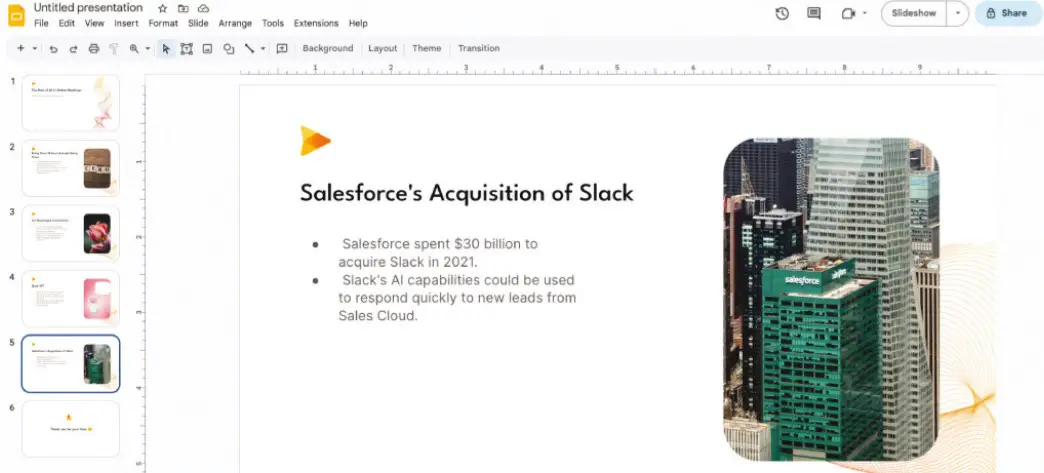
Death by PowerPoint doesn’t only afflict an audience – it can drain a serious amount of time for the poor sod putting together a presentation, too. SlidesAI wants to handle that for you.
This add-on for Google Slides invites you to copy and paste a large chunk of text that you want to make a presentation about. On the free plan, that’s limited to 2,500 characters, but the Pro plan (roughly a tenner per month) gives you 6,000 characters to play with and up to ten presentations per month.
I gave it an article I wrote about whether it’s acceptable to send an AI assistant to your virtual meetings on your behalf, and it did a solid job of picking out the key points, summarizing them, and slotting them into an eight-slide presentation.
The AI also picks out the images, and here it wandered slightly off piste. A slide on “AI’s meaningful contribution” to meetings was illustrated with a tulip, for instance, for reasons I simply can’t fathom. However, a later slide about Salesforce’s acquisition of Slack did come with a nice pic of Salesforce HQ.
All the content can be tweaked and amended, so if you’re in need of a quick-and-dirty presentation, SlidesAI could well be the AI you want to take to a meeting with you.
Notion AI
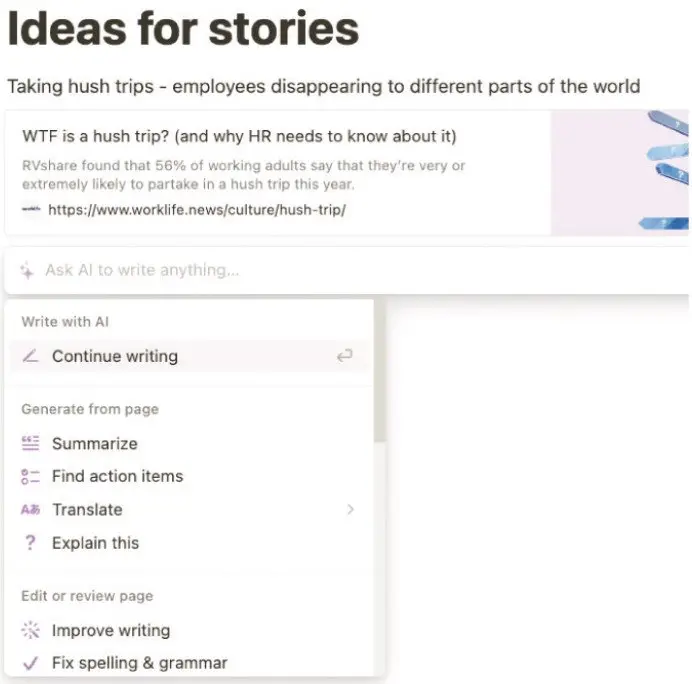
Notion has become one of those trendy apps, a OneNote for people who like to be seen (the very fact I’ve used the word “trendy” shows I shouldn’t be anywhere near it).
It’s an all-encompassing note-taker that can be used for creating to-do lists, bashing out ideas, taking notes in meetings and even as a public wiki for your company’s products.
Notion has recently added AI tools to the mix, and these are very well implemented. As you’re writing on any page, you can simply press the space bar at the start of a new line and activate the AI tools. Here, for example, you can ask the AI to autocomplete a passage you’re writing, to list ten ideas on different ways you could market a new product, or get it to create a to-do list of items you’ll need to pack for a forthcoming holiday. If you’ve used it to take meeting notes, it can pick out the action points; if you’ve written a description of a new product line, the AI can take a stab at writing the press release.
The AI responses flow into the page within a couple of seconds, and it’s easy to edit out any daft suggestions. “Adapter for electrical outlets” for my holiday to Crete? Don’t be daft, everyone knows you buy them afresh at the airport every time you fly abroad at vastly inflated prices.
Notion gives free account holders 20 chugs on the AI every month. If you find it invaluable, and you just might, then it’s $10 a month for unlimited AI invocations.

WINDOWS COPILOT: THE ONE WE’RE WAITING FOR
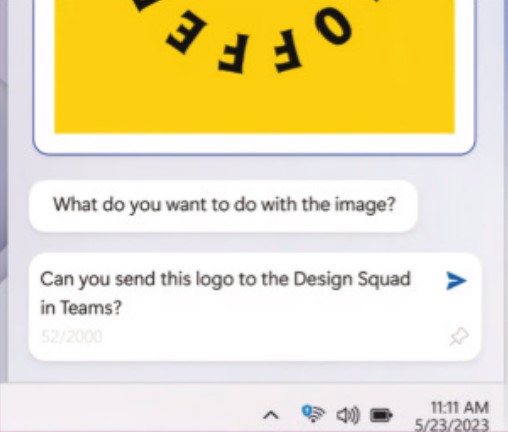
Microsoft hasn’t bet the house on AI, but it’s certainly unbuttoning its shirt. AI has given Bing search and the Edge browser a belated reason for being; we’ve seen hints of what’s coming in Microsoft Office; and now Microsoft has unveiled Windows Copilot.
At the time of writing, Windows Copilot was being readied for a beta launch, and we hope to have a fuller breakdown of how it works in next month’s magazine. Until that point, we’re relying on what Microsoft revealed at its Build conference, but even from the little we can already see, AI is clearly being integrated heavily into Windows 11. So much so that we’re a little surprised this isn’t the basis for Windows 12.
At its most basic level, Windows Copilot may stop you from ever having to dive into Settings or what’s left of the Control Panel again, with the ability to ask the AI assistant to turn on features such as focus modes or dark themes.
Windows Copilot also looks set to get some of the AI abilities we’ve listed in apps here, such as the option to drag across a PDF file and ask for a summary of its contents.
However, Windows Copilot starts to get really interesting with deep integration into apps, both from third parties and Microsoft’s own. A Microsoft demo video shows someone asking for help designing a business logo, for which they are directed into Adobe Express. Once the logo is designed, it’s exported back to the AI assistant, where the user asks it to be sent to members of a group in Microsoft Teams, which is performed automatically.
If – and it’s a big if – Windows Copilot works as smoothly as it does in Microsoft’s demo, this could be a very big deal indeed. If it gets drowned in a sea of permissions prompts or favors Microsoft’s apps over all else, it could be the missed opportunity of the decade. We’ll find out more soon.
As we conclude our journey through the “10 Best AI Tools,” we hope you’ve gained valuable insights into the dynamic world of artificial intelligence. These tools are not mere innovations; they represent a glimpse into the limitless potential of AI to enhance, streamline, and redefine the way we work and interact with technology.
Thank you for joining us on this journey through the world of AI tools. We look forward to seeing how you’ll use these tools to shape the future and make a meaningful impact in your field. As technology continues to advance, remember that the future is not just something to anticipate—it’s something you have the power to create with the help of these remarkable AI tools.

Comments